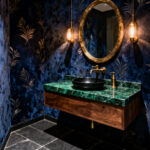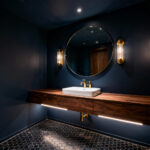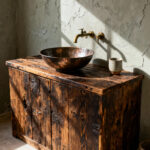Imagine a shower that caters to your every need, regardless of age or ability. A space that’s not just functional but also a true oasis of comfort and safety. That’s the promise of accessible shower design – creating a bathroom that works for everyone, from grandparents to young families.
As a homeowner, you might wonder, “How can I make my shower more accessible without sacrificing style?” Well, you’re in luck! In this article, we’ll explore the world of universal design, uncovering practical and innovative ideas to transform your shower into a haven of accessibility and beauty.
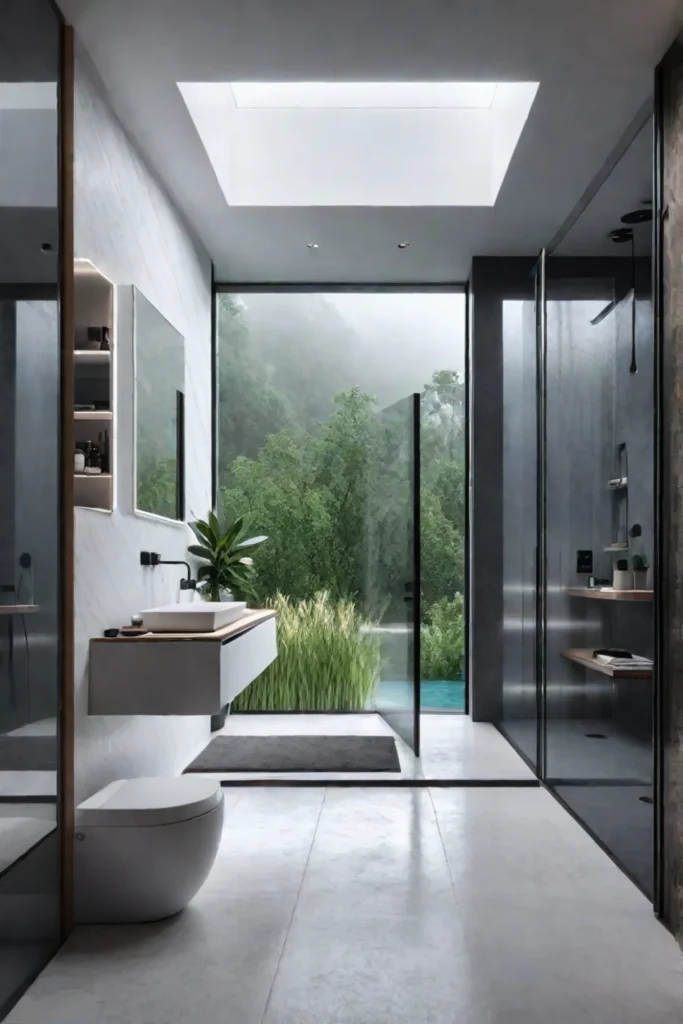
Designing for Accessibility
Accessible shower design is all about creating a usable and comfortable space for individuals with varying physical abilities. It’s not just about meeting the minimum standards of the Americans with Disabilities Act (ADA) – it’s about going the extra mile to ensure your shower is a welcoming and inclusive environment for everyone.
Understanding the Needs of All Users
Regarding accessible shower design, it’s essential to consider the specific needs and challenges faced by individuals with mobility, sensory, or cognitive impairments. For example, someone with limited mobility might require grab bars, non-slip flooring, and adjustable showerheads to enhance safety and ease of use. Meanwhile, someone with sensory challenges might benefit from features like adjustable lighting and contrasting colors to improve their overall experience.

Incorporating Key Accessibility Features
So, what are the key features that make a shower truly accessible? Let’s take a look:
Grab Bars: These sturdy, strategically placed handles provide essential support and stability, reducing the risk of falls and injuries.
Non-Slip Flooring: Textured tiles or non-slip mats help prevent slips and create a safer environment for users with mobility or sensory challenges.
Adjustable Showerheads: Handheld or height-adjustable showerheads allow users to customize the water flow and height, accommodating different needs and preferences.
Seating Options: Built-in benches or fold-down seats offer a comfortable and secure place to rest or transfer, making the shower experience more accessible for those with limited mobility.
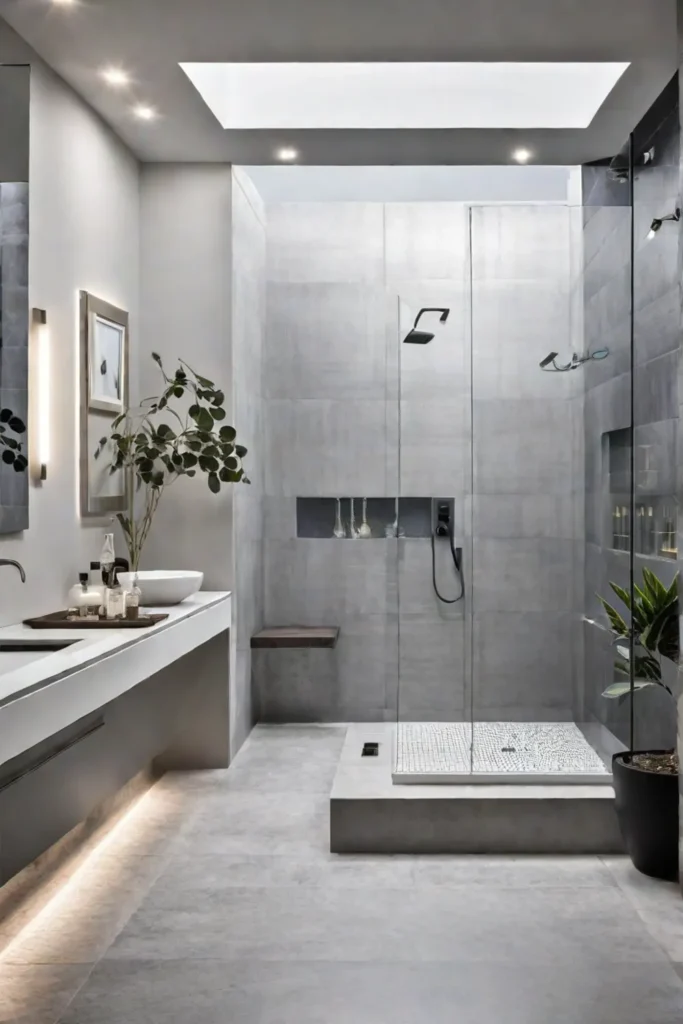
By incorporating these features, you can create a shower that looks great and provides the support and safety your family needs, now and in the future.
Enhancing Accessibility with Walk-in Showers
One of the most popular choices for accessible shower design is the walk-in shower. With its low or zero-threshold entry, a walk-in shower makes it easier for individuals with mobility challenges to safely enter and exit the shower space.
The Advantages of Walk-in Showers
Walk-in showers offer several key advantages:
Reduced Fall Risk: Studies show that walk-in showers can reduce the risk of falls and injuries by up to 50% compared to traditional bathtubs.

Improved Accessibility: The low or zero-threshold entry allows easy access, making the shower more usable for those with mobility limitations.
Customizable Design: Walk-in showers can be tailored to meet the specific needs of the user, incorporating features like built-in seating, handheld showerheads, and slip-resistant flooring.
Designing the Perfect Walk-in Shower
When planning a walk-in shower, consider factors like dimensions, layout, and materials to ensure a safe and comfortable user experience. The right design elements, such as a low threshold, non-slip flooring, and adjustable showerheads, can transform your shower into a true oasis of accessibility.
Providing Essential Support with Grab Bars
Grab bars are a crucial component of accessible shower design. They offer stability, support, and safety for users. These sturdy, strategically placed handles can significantly prevent falls and enhance the overall user experience.
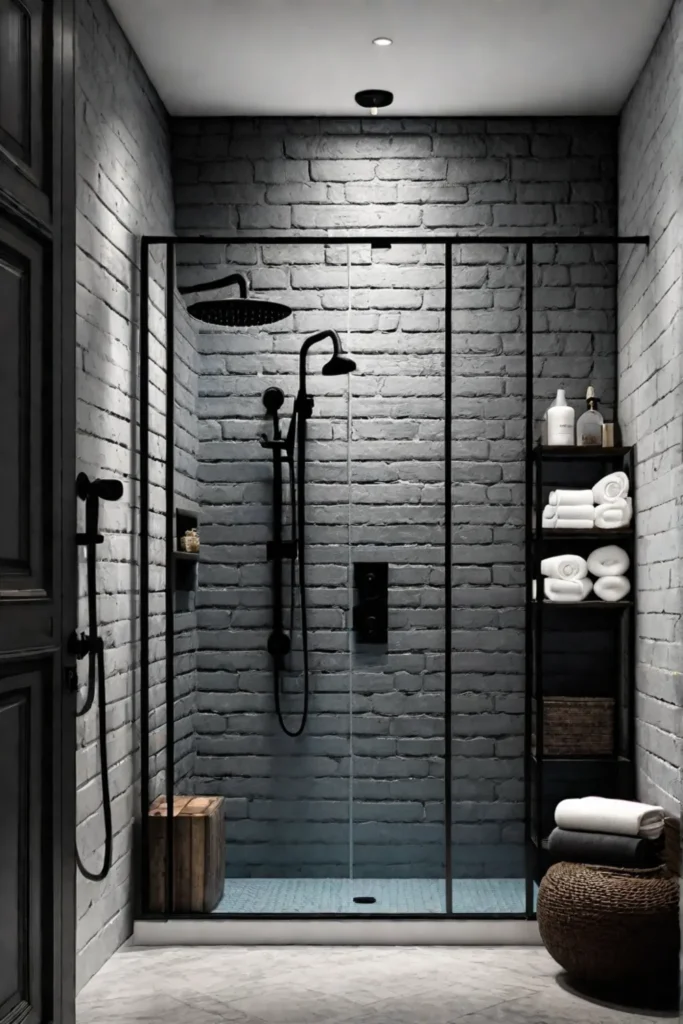
The Importance of Proper Grab Bar Placement
Grab bars should be installed in key locations, such as near the toilet, shower, and vanity. Industry standards recommend placing them at least every 12 inches along the wall, with at least one grab bar on each wall. This ensures that users have the support they need, no matter where they move within the shower space.
Selecting the Right Grab Bars
When choosing grab bars, consider the user’s height, weight, and mobility needs. Opt for grab bars with sturdy construction and a weight capacity that can safely support the user. Additionally, select a material and finish that complements the overall design of your bathroom.
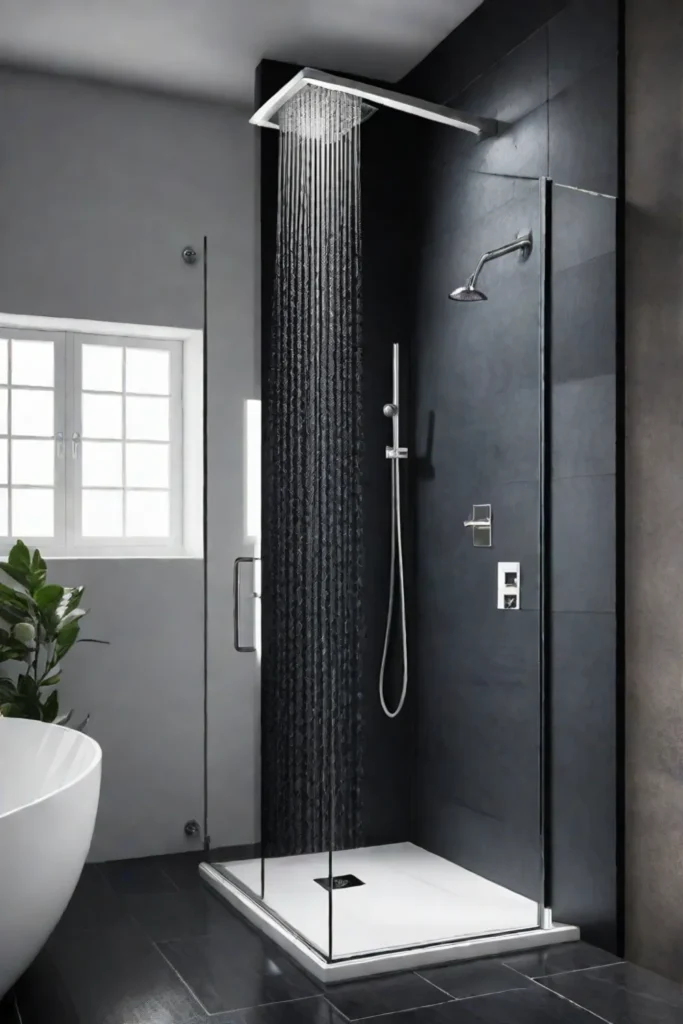
Ensuring Safe Footing with Non-Slip Flooring
Slip-resistant flooring is a critical component of accessible shower design, helping to prevent falls and maintain a safe environment. Choosing the right non-slip flooring materials can significantly reduce the risk of accidents and provide peace of mind for all users.
Exploring Non-Slip Flooring Options
There are several non-slip flooring options to consider, each with its unique characteristics:
Textured Tiles: These tiles feature a rougher surface texture, providing better traction and slip resistance.
Rubber Mats: Rubber mats offer excellent grip and can be easily installed in the shower area.
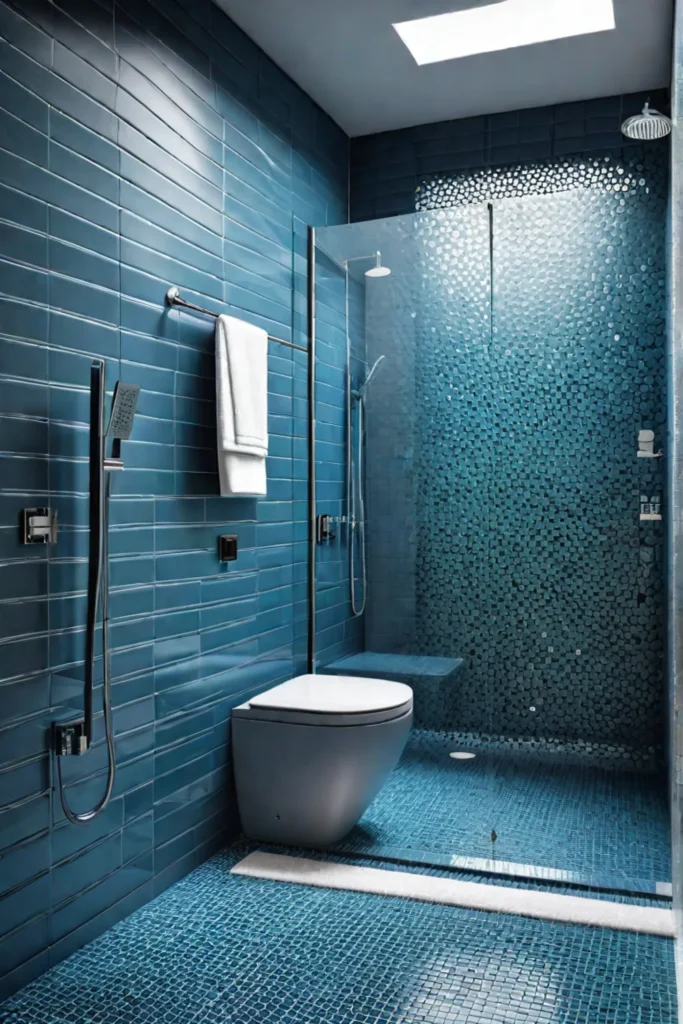
Anti-Slip Coatings: These specialized coatings can be applied to existing flooring to enhance its slip resistance.
When selecting non-slip flooring, consider factors like the user’s needs, the overall design aesthetic, and the ease of maintenance.
Customizing the Shower Experience with Adjustable Showerheads
Adjustable showerheads are a game-changer in accessible shower design. These versatile fixtures allow users to personalize the water flow and height, ensuring a comfortable and enjoyable shower experience for everyone.
The Benefits of Adjustable Showerheads
Studies show that adjustable showerheads can significantly improve user satisfaction and comfort, particularly for those with mobility or height-related challenges. By allowing users to customize the water flow and height, adjustable showerheads cater to the diverse needs of all users.

Exploring Adjustable Showerhead Options
There are plenty of options to choose from, from handheld showerheads to fixed showerheads with adjustable spray patterns. When selecting an adjustable showerhead, consider factors like water pressure, spray settings, and ease of use to ensure a seamless and accessible shower experience.
Providing Comfort and Support with Seating Options
Seating options, such as built-in benches or fold-down seats, are essential features in accessible shower design. These features offer users a comfortable and secure place to rest or transfer, enhancing the overall usability and accessibility of the shower space.
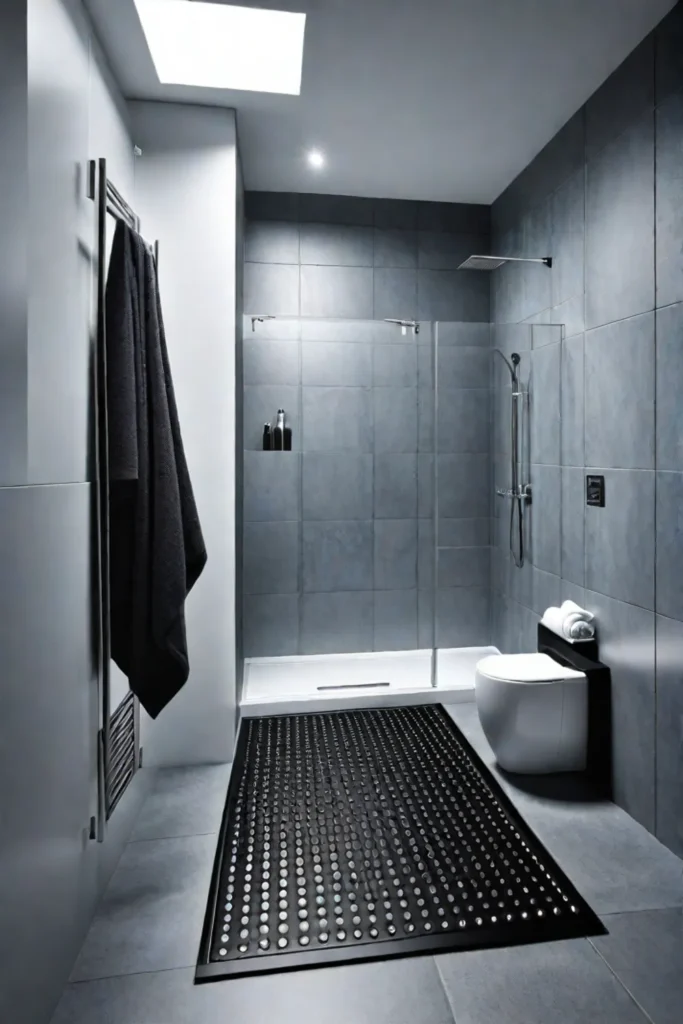
The Importance of Seating in Accessible Showers
According to a study by the National Kitchen and Bath Association, homeowners who want to improve accessibility often request seating options in the shower. By incorporating seating, you can create a shower that caters to the needs of users with limited mobility, providing a safe and comfortable environment.
Selecting the Right Seating Solution
When choosing a seating option for your accessible shower, consider factors like size, weight capacity, and material to ensure a secure and comfortable experience. Whether you opt for a built-in bench, a fold-down seat, or a removable shower chair, the key is to select a solution that meets the user’s specific needs.
Integrating Assistive Technology for Enhanced Accessibility
Advancements in technology have introduced a range of assistive features that can be seamlessly integrated into accessible shower design, further enhancing the user experience. From voice-activated controls to smart shower systems, these innovative solutions can provide greater independence, convenience, and safety for individuals with diverse abilities.
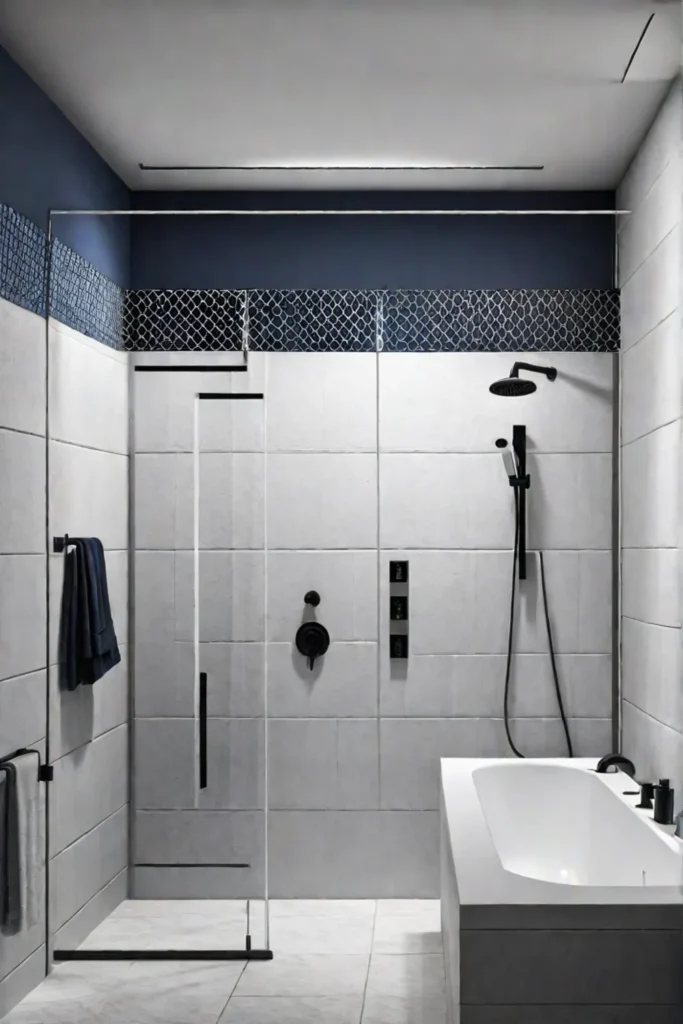
Assistive Features for Accessible Showers
Some of the most compelling assistive features for accessible showers include:
Voice-Activated Controls: Allow users to operate the shower functions using simple voice commands, eliminating the need for manual control.
Motion-Sensing Lighting: Provide clear and safe navigation through the shower space, particularly for individuals with visual impairments.
Smart Shower Systems: Maintaining a consistent water temperature and pressure ensures a comfortable and enjoyable shower experience for users with chronic pain or temperature sensitivity.
By incorporating these assistive technologies, you can create a shower that looks great and provides a truly personalized and accessible experience for all users.

Conclusion: Designing for Aesthetics and Functionality
Accessible shower design is not just about functionality—it’s also about creating a visually appealing and harmonious space. By carefully selecting materials, finishes, and fixtures that complement the accessible features, you can craft a practical and aesthetically pleasing shower.
Remember, accessible design doesn’t have to mean sacrificing style. Well-designed accessible bathrooms can increase a home’s resale value by up to 8%. So, why not create a shower that meets your family’s needs and reflects your design aesthetic?
Ready to transform your shower into a haven of accessibility and beauty? Start by exploring the features and solutions we’ve discussed in this article. With a little planning and the right design choices, you can create a shower that caters to everybody and every ability. Happy designing!

